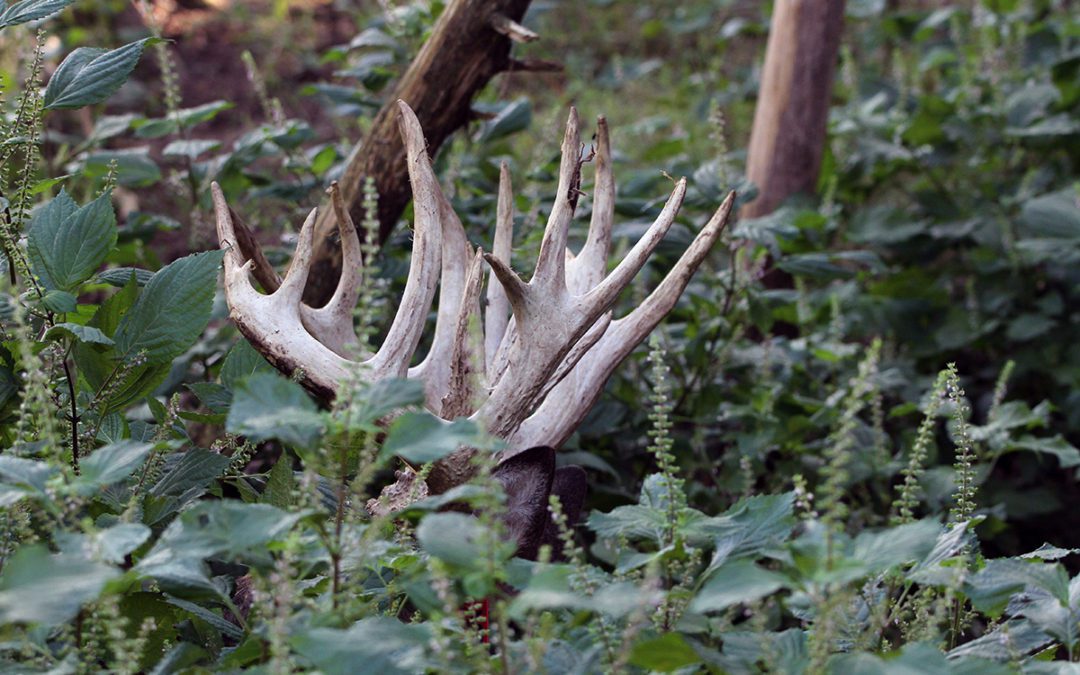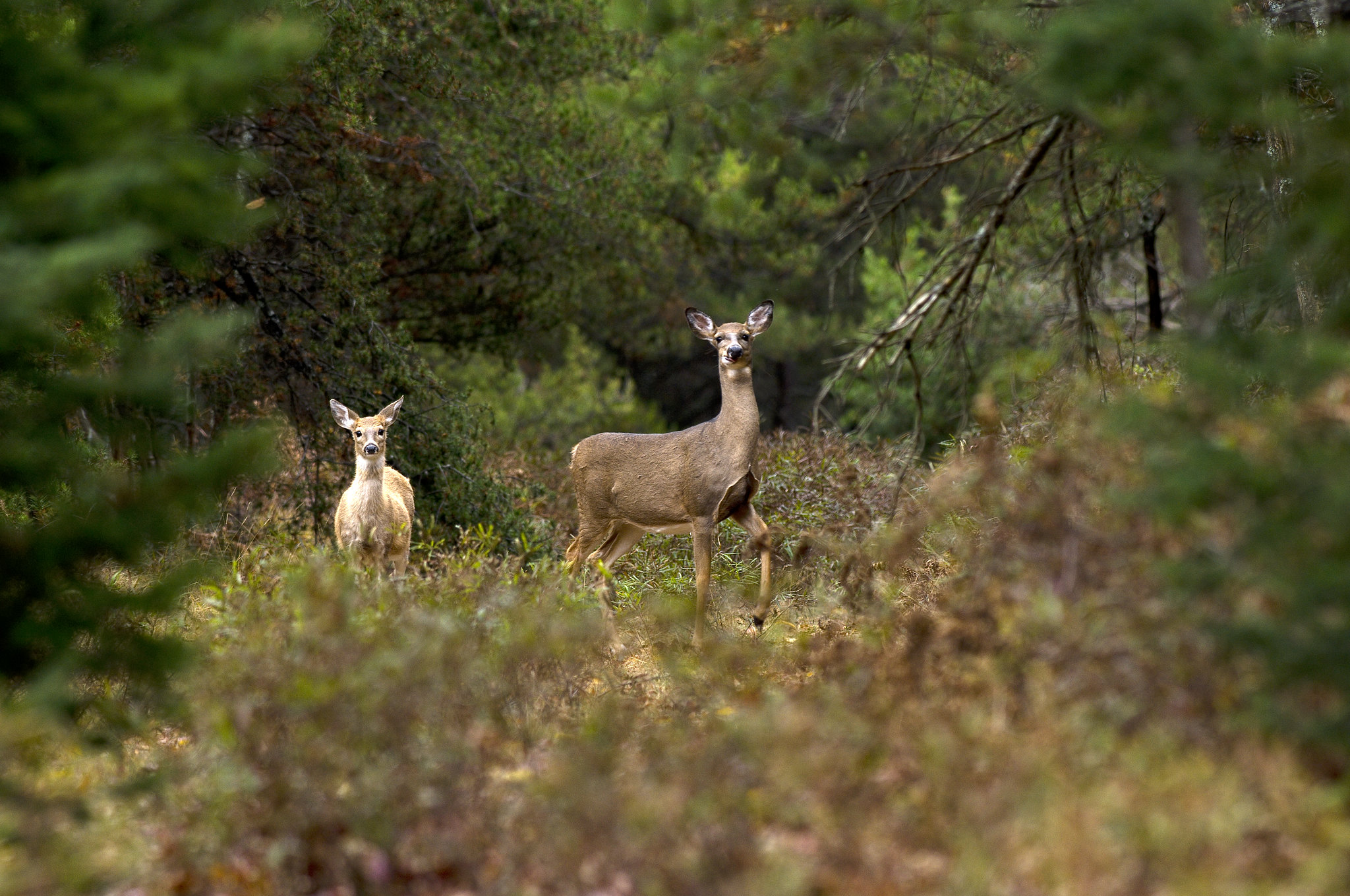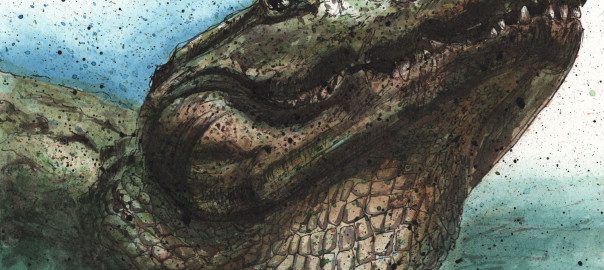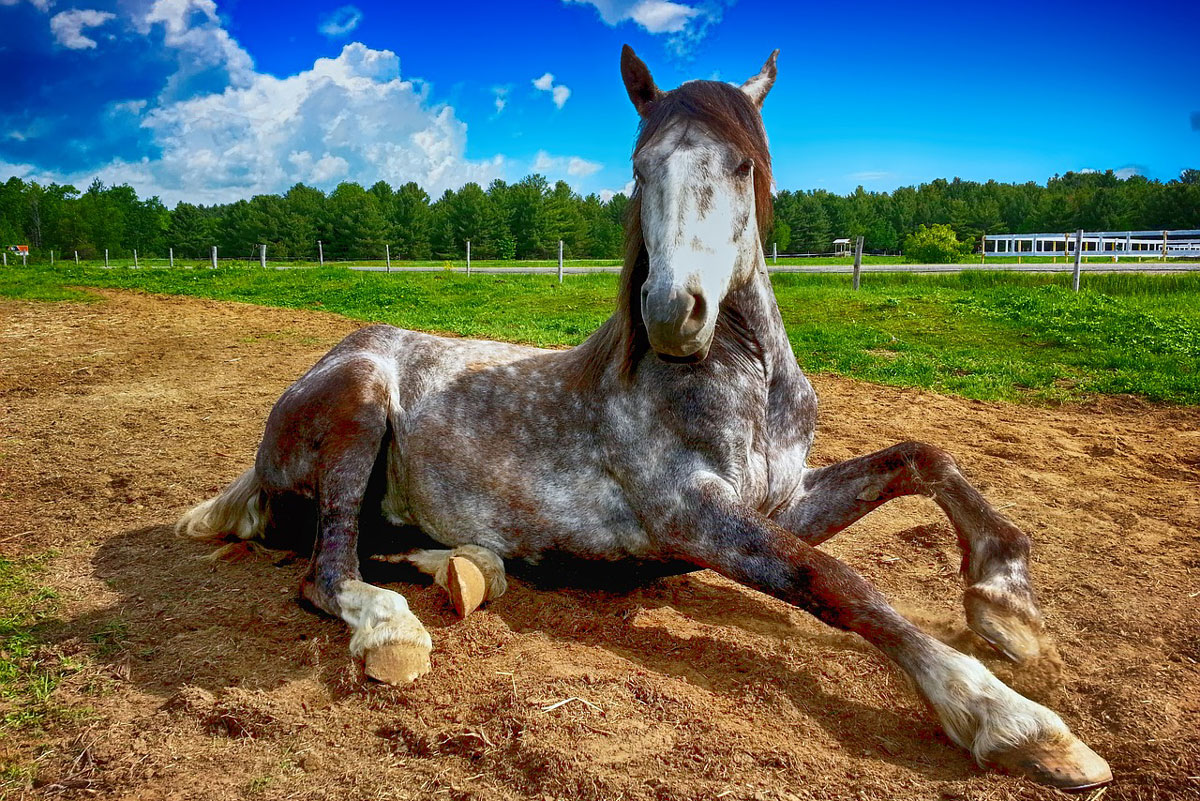Chuck, the editor at Sporting Classics, knew of my distaste for high-fence hunting. His office is wall-to-wall with “in your dreams” racks from various “controlled” operations, and they’ve been the target of many of my barbs over the years.
“Chuck, this one still has his I.D. tag on his ear.”
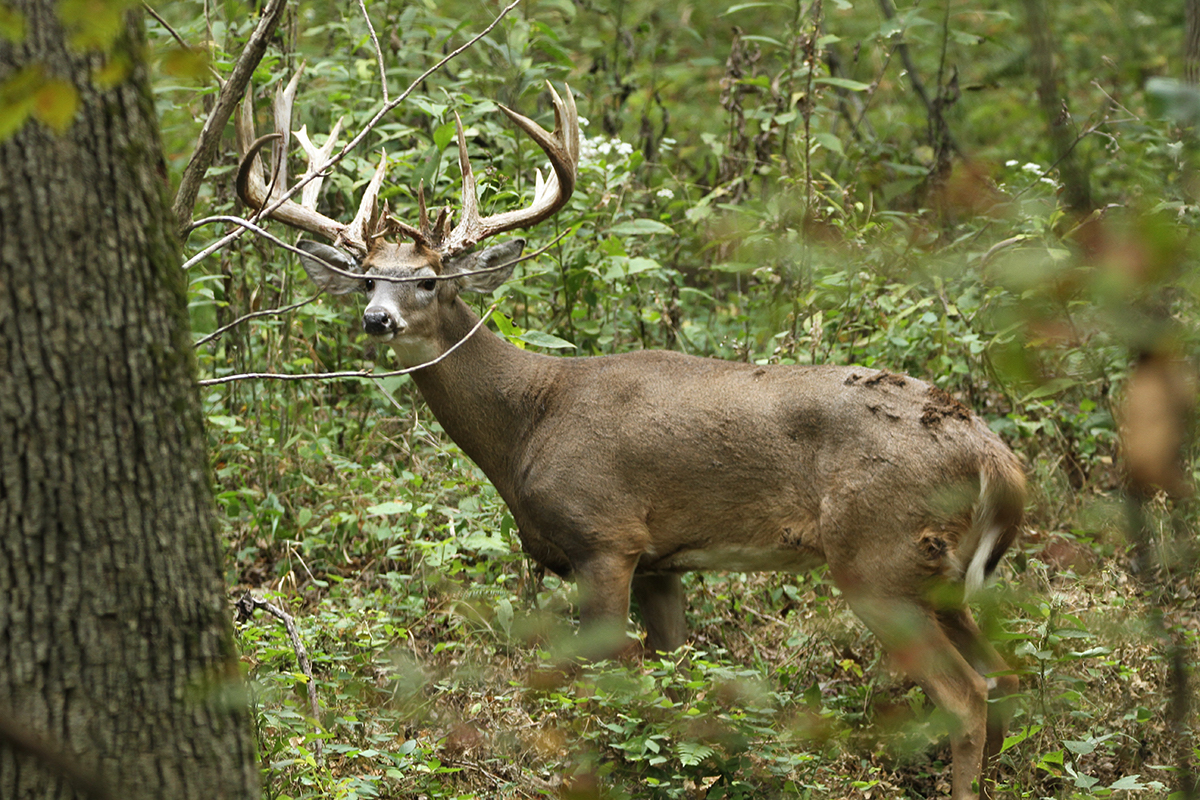
Finally, this past fall, the boss made me an offer to hunt Oak Creek that he hoped I couldn’t refuse. If I said “yes,” it would benefit him in two ways. One, since the original writer was no longer available, it would get the article written as planned. Two, it would hopefully shut me up.
First thing I did to prepare was visit Oak Creek’s website. Yow! The deer were huge—250-pound bodies, 240-inch racks— they would eat our Carolina bucks for breakfast! Just the thought of seeing such creatures in-person suddenly had me jacked up about the adventure.
Rather than flying out, I decided to drive the 800 miles from South Carolina to Missouri. Schlepping a firearm along was the main reason. Missing out on that unpredictable, potentially infuriating airport experience, plus having the ability to haul all my stuff, including a giant ice cooler, made taking my pick-up truck a no-brainer. What’s a few more hours on the road when there’s a lot of nice scenery along the way, plus Sirius XM sports talk on the radio?
I arrived late in the evening, just in time for dinner. The Oak Creek lodge is well appointed, but still has the ambiance of the old farmhouse upon which it was built. The owners, guides, kitchen staff and guests were all mingling together, laughing, joking and discussing the day’s events and their plans for the following day. Everyone eventually got around to giving me a welcoming handshake and an assurance that I would have an unforgettable time. The delicious country-style dinner topped it off.
Believing that I would be in the lap of luxury, surrounded by the rich and famous, I brought my nicest “sit by the fire and sip a fine single malt” apparel.
Turned out my fellow hunters included a carpenter from Connecticut, the owner of an auto repair shop in New Hampshire and his college-age daughter, and a professor from Louisiana. No dress code required.
Not poor folk by any means, but hard-working people who have little time to hunt, so they come to Oak Creek to make the most of their days in the woods. In fact, they were all return guests, which speaks volumes about the high-quality experience one can expect.

It was mid-December and late in the hunting season. The bucks, having been hunted hard, had become masters in the art of keeping their heads attached to their bodies. And while we wound up seeing lots of deer, including some genuine jaw-droppers, we were after one in particular that my guide, Mark McKnight, had spotted the day before my arrival.
At dawn the next morning, Mark and I climbed into a covered double stand overlooking a green field of winter wheat. A patch of soybeans was visible in the back of the plot.
“These deer have lots of food year-round,” he told me as we gazed through our binoculars. “We plant different types of clover, wheat and turnips in the fall, along with soybeans, sunflowers and milo in the spring. Plus, there’s usually plenty of acorns and other mast, including persimmon trees just about everywhere you look throughout the preserve.”
There are also feeders loaded with carefully selected grains, mostly grown and mixed on the property. Donald Hill, the owner, wants to get every ounce and inch of growth potential out of his whitetails. That’s why he is meticulous about monitoring their feed, the crops and their effect on the herd.
At 9:30 a.m., a light drizzle had begun to fall and we’d only seen a couple of does and fawns. Mark suggested taking the ATV back to the lodge for breakfast. I gave him a solid thumbs up on that idea.
We had heard one shot during our morning hunt. Turned out that David Cunningham from Connecticut had killed a pretty buck at 70 yards on an acorn covered hilltop. By the time we got to the lodge, the guides had the deer skinned, gutted and hung in the cooler. The head, with its handsome rack, rested on a countertop waiting to be caped out.
After breakfast and a 30-minute nap, Mark recommended we return to the same stand. It’s where they’d seen that particular buck earlier in the week. It was in the 240-range with a very typical frame. When the deer get larger than that, they can have some fairly unusual racks, which is something I wasn’t interested in.
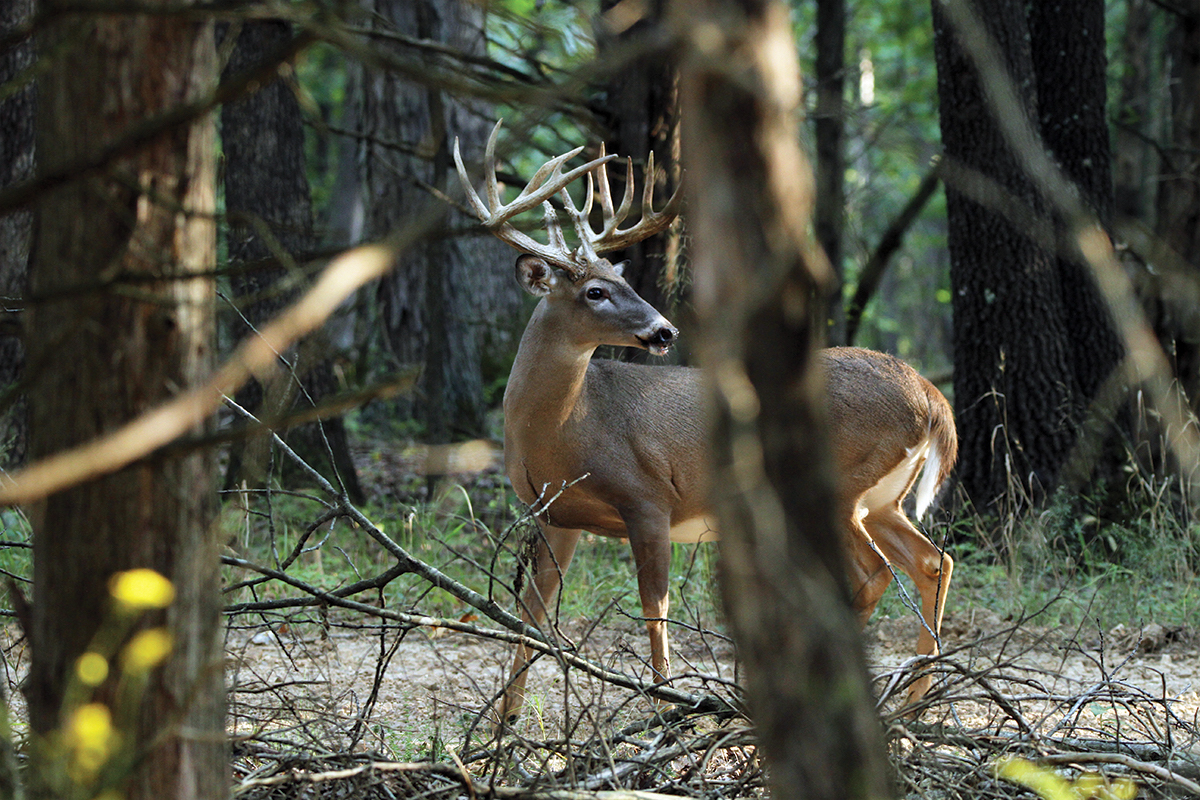
Mark McKnight was a lot of fun to hang out with, which is fortunate considering we spent most every hunting minute together. He had a good sense of humor, which is crucial if you’re going to be stuck in close quarters with me for hours at a time.
Whether in a roomy box stand or riding the roads, he was there to give me the lowdown on the place and to keep me from shooting the first 3-year-old 12-pointer I laid my eyes on.
Just before dark, Mark spotted the buck. In the thickening fog, he was feeding in a patch of soybeans at the far end of the field some 300 yards away. Mark rattled and grunted but to no effect. I put my Leupolds on the deer just long enough to murmur a few words of profane praise. Then he drifted away into the mist.
So, here it was at the end of day one of my three-day hunt. I began questioning what I’d gotten myself into. I had come with the expectation of seeing herd after herd of whitetails, passing on bucks that dwarfed any I’d ever seen on the hoof.
Thus far, I’d seen, and just barely, one giant buck at a hazy 300 yards, plus several does and fawns. That’s not counting the bucks we busted from the Gator that shared only glimpses of their impressive racks.
Dang! I thought. I was all about having a real hunting experience . . . but not this real!
Nevertheless, that’s the way it is at Oak Creek Ranch. These are 100-percent Odocoileus virginianus, with wildness running through every muscle, bone and nerve-ending. Especially in the late season when they’re nervous and cautious.
The next morning, in a cold rain mixed with a few snowflakes, Mark and I cruised in his Gator, glassing the fields and hardwoods for bucks. We soon ran into Shane, another guide who’d also been out surveying the situation. Shane reported seeing a large buck with two does bedded down on a hardwood slope.
Mark drove the 4-wheeler to the area Shane had described. We parked the machine and attempted to walk in downwind and uphill from the trio. But we were busted by an unseen doe and the bunch bolted for parts unknown. All we caught was a glimpse of white flags bounding away.

Later that morning, Mark and I were sitting in the Gator, glassing the open hardwoods when we again spotted the buck nibbling leaves in a dense thicket. We stalked through the hardwoods on the opposite hillside to within 75 yards. There, I quietly placed my Jarrett .280 atop Mark’s shooting sticks. The buck remained in the tangle, grazing casually.
We were so close, yet I couldn’t get a clear shot through the undergrowth. I really think the deer knew that. That would explain why, rather than wandering out into the open hardwoods and offering a shot, he suddenly took off full speed, disappearing over the far hilltop.
Yeah, he knew.
Goodbye Mr. Buckzilla.
After lunch, Mark took me on an ATV tour of the property. We got a look at a small herd of axis deer feeding on turnips. They ambled slowly into the woods, not particularly put off by our presence. And yes, you can hunt them. Along with exotics, there’s elk on the property as well.
At mid-afternoon we settled into the stand overlooking that same field of turnips. By 3:00 p.m. the deer were moving. We watched a number of future trophies feeding and cruising. But no shooters.
As darkness began to drape over the landscape, we loaded into the Gator and headed back to the lodge. With one more day to hunt, I was starting to get a bit antsy.
After another delicious and filling meal that evening, I poured a glass of wine and settled into the great room to talk hunting. All the guys, plus Matt’s daughter who’d arrived the previous night, had taken bucks. Matt had even killed two. But rather then rubbing it in, I believe they would have staged an “all hands on deck” man-drive in order to assure me a shot.
Looking at the beautiful racks adorning the walls of the Oak Creek Lodge great room, I asked Donald how he’s managed to create such a trophy whitetail destination. He explained that it all started 27 years ago with a seed crop of Canadian deer.
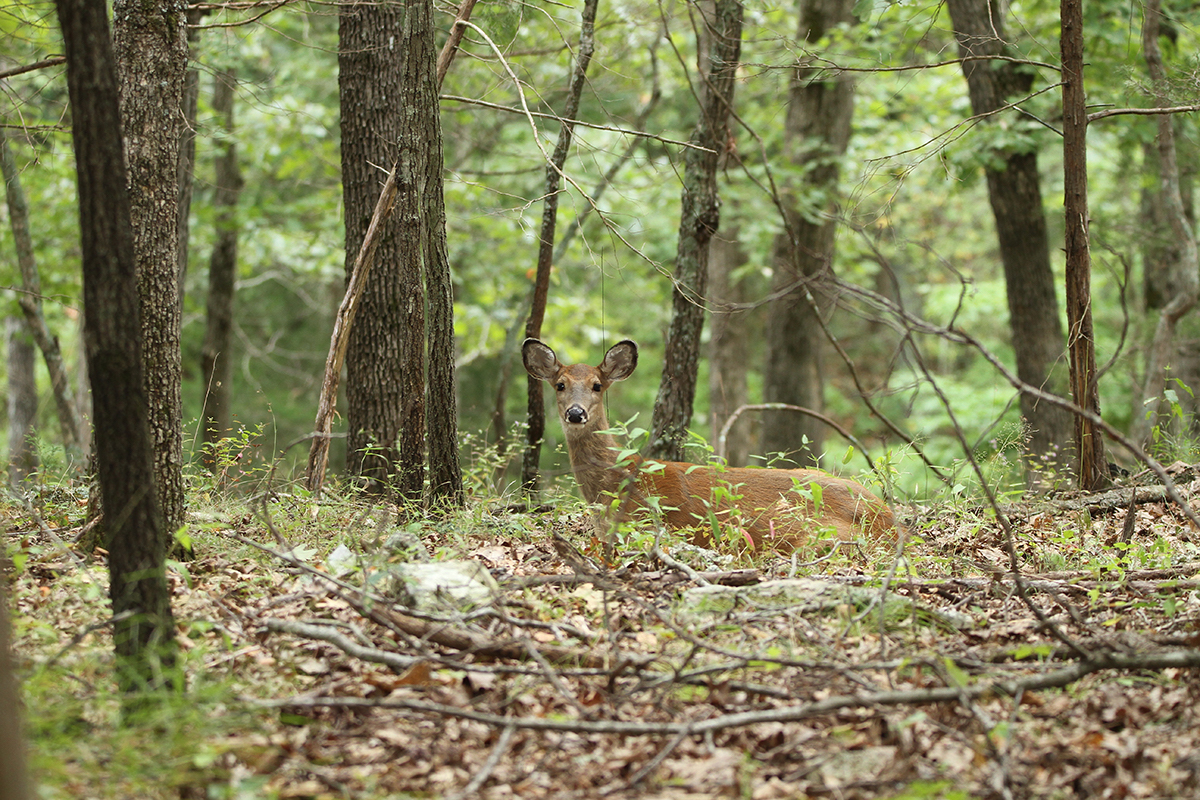
“We bought the deer back in 1992 and, since then, they’ve been consistently managed. Today, if, by the time they reach two years old, they’re not in the 180 to 200 range and pretty typical, we’ll try to take them out of the herd.
“Most of the deer that grow to maturity are ones that we don’t mind breeding. They’re going to be big, wide, open frame deer with long tines. We just try to manage to the best of our ability. Over 27 years, you just keep doing that and raising that bar a little bit every year and, well, we’ve been very lucky.”
Along with genetics, Donald says nutrition is another critical part of the equation. That’s the reason they produce their own mix for supplemental feeding.
“We’ve been sort of rewriting the book on deer nutrition,” Donald said. “For instance, deer need a little bit more energy than cows. They don’t need the protein levels; they need a little bit more fat in their diet. We think we’ve got our nutrition program where it needs to be.
“We’ll likely have a couple of world record deer on the property again this year. I don’t know if we’ll hunt them or not. We may let them go a couple more years, so they can do most of the breeding. I bet we’ll have ten deer in the top twenty. For a typical, that’s in the 220 to 250 range.”
He went on to say that their non-typical racks can get up in the 400-inch range, but it’s really the typical, symmetrical racks they are shooting for.

“Many people have a misconception about high fence hunting,” Donald said. “And a lot of places do have it set up where you pick one out, shoot it and go home. We’re not about that. We’re more about the experience of the hunt. That’s what we strive to give every hunter who comes through.”
The next morning, a peach-colored horizon had merged with greenish blue as the sun prepared to make its grand entrance. There was a chill in the air, but nothing uncomfortable. Just that sting on your cheeks and nose that reminds you this is deer hunting in December. And that’s a good thing.
It wasn’t long before we spotted a beautiful 170-class buck at the far edge of the soybeans. But, yeah “only 170.” I never thought I’d ever hear myself say that, and I seriously doubt I will ever utter those words again.
Shane’s clients had all completed their hunts, so they spent the morning scouting from roads and ATV trails. At lunch, Shane walked over to the table where Mark and I were eating and said he’d spotted a very good buck in the 240 range lying up on a hillside. Not the same buck we’d been after, not as typical as we’d hoped, but the same size, maybe even bigger. He suggested we finish lunch and get out there as quickly as possible.
The guides’ excitement was contagious. My anticipation was beginning to overcome my fear of striking out. I received several “good lucks” as I slipped on my Rocky boots in the mud room. I nodded, smiled, grabbed my rifle and climbed into the waiting Gator.
By 2:00, Mark and I were in an elevated blind close to where Shane had seen the buck. “This wheat field is where he’s been seen the last week or so,” Mark told me. “We’ll wait for him and hope he steps out. But Shane and everyone else is still scouting the property. They may see something better.”
Being the typically optimistic hunter, I was fully expecting a monster buck to step out into the field at any moment.
Suddenly, a very excited Mark said urgently, “We need to go! Shane just said that buck was seen on another piece of the property chasing a doe. We need to go now!”
Ten minutes later, we were climbing quietly from the Gator at the edge of a turnip field. Mark grabbed the tripod shooting sticks and the two of us hunkered down in the shadows of the forest edge.

“They said he’d been spotted on the other side of this field,” Mark whispered, pointing the shooting sticks ahead and to the left.
After only a few tentative steps, Mark stopped and reached back to touch my shoulder. “Do you see him,” he asked with tethered excitement.
I whispered, “negative.”
We hunkered lower, Mark still in the lead. The field was atop a hill so that, as we moved along its edge, we were actually circling toward the deer.
“How about now,” Mark asked.
“I see an antler.”
“Let’s keep going. Be ready.”
Mark led me along the edge of the plot, staying in the sheltering shade of the hardwoods. We were walking almost directly toward the buck, his body becoming more exposed as we circled the slope. He was about 100 yards away, believing he was blended into the brush and scrub around him. The buck was holding tight, waiting for us to pass. It’s often a deer’s most effective survival trick.
But not always.
Mark set up the sticks and I placed the rifle in the three prongs. Aiming at the center of his sternum, I ticked the safety and fired. As the smoke cleared, there was no buck.
“Good shot,” Mark said aloud.
“Not used to shooting one in the front like that,” I replied. “I hope you’re right.”
We walked quickly to the spot. A pawed area showed where he’d stood, then took off. But no blood. Mark and I circled around the spot, but there were many deer trails leading in and out, which made trailing even more challenging.
And still no blood.
“I’ll call Donald and tell him to bring the dogs over,” Mark said. “They’ll find his trail.”
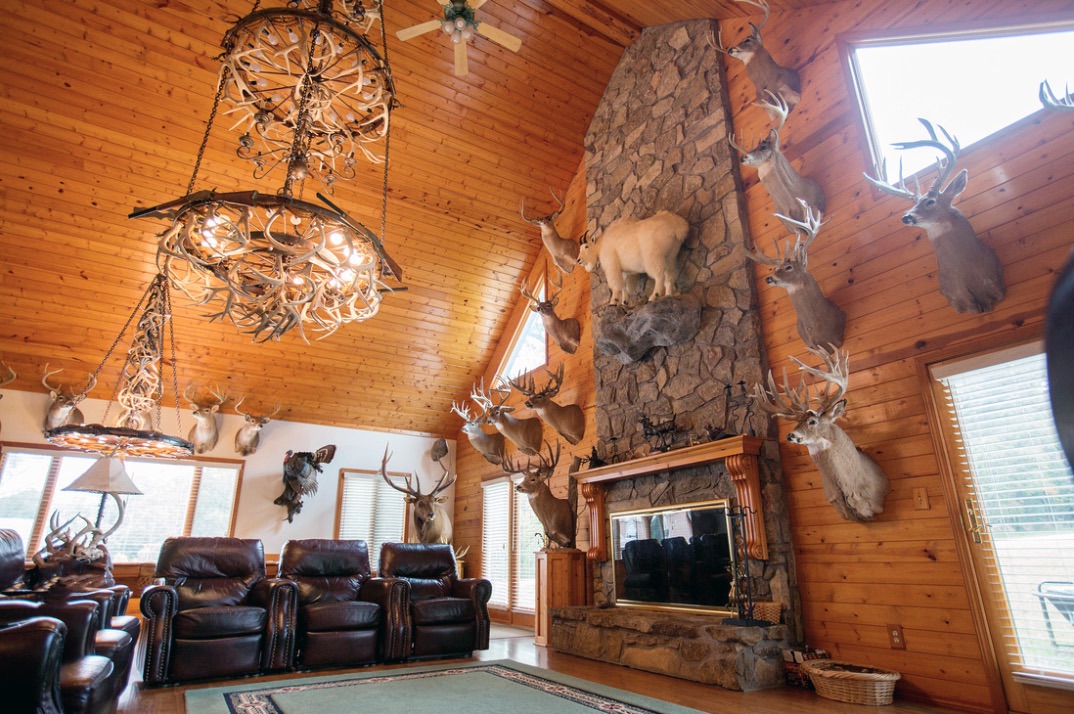
There was a small brook that flowed past the field some 50 yards below. We headed down the slope in slightly different angles. No blood. We walked a bit of the stream edge but no deer—no blood. Not a drop.
As I walked back up the hill, still searching for a speck of crimson, I could hear Donald’s truck approaching with the trail dogs yipping joyfully.
“Here he is!” Mark shouted from the creek bottom. I hurried back down the hill toward the sound of his voice. Sure enough, there was the beautiful buck, piled up in a few inches of water, only ten yards upstream from where I’d stopped my search.
“Damn,” I said, as amazed at the body size as I was of the antlers. Moments later, Donald’s dogs were on the buck biting and nipping at him but not causing any damage to the horns or cape. After photos of the big non-typical, Donald managed to drive his truck down to the creek, saving us all from a grueling 50-yard uphill drag.
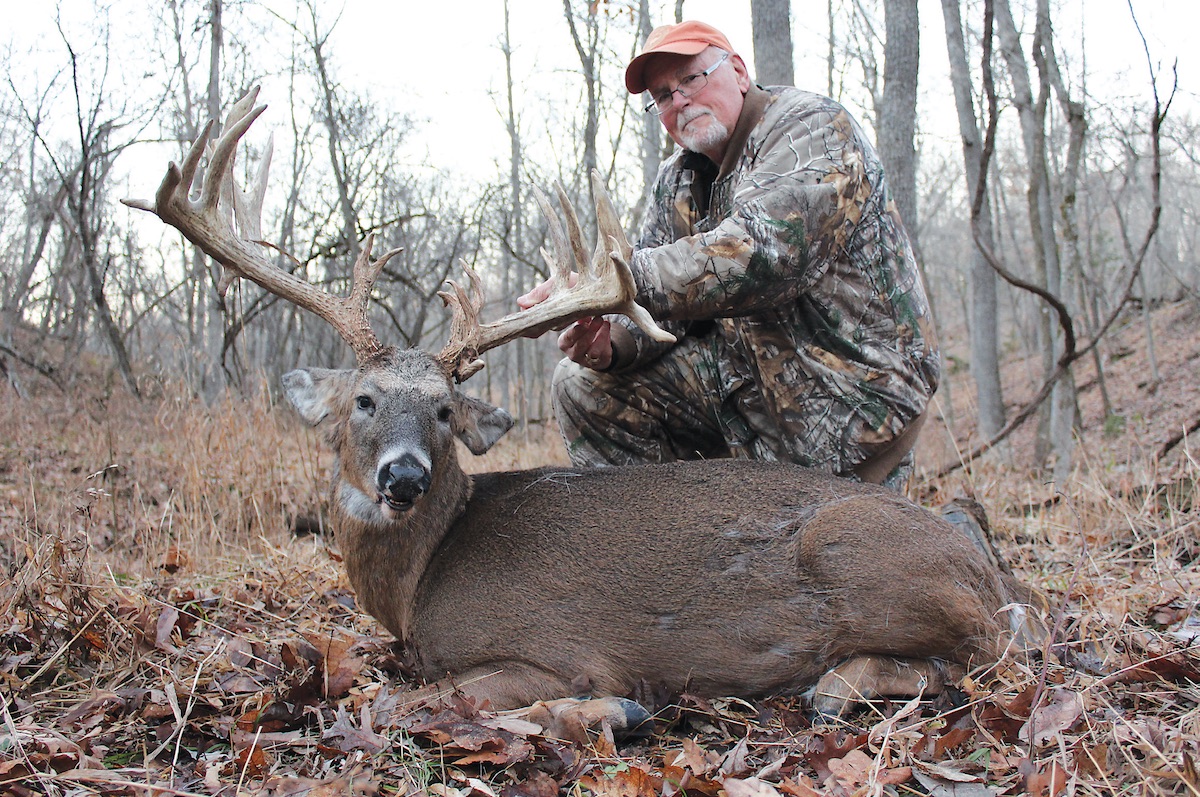
The author with his last-minute trophy. The non-typical rack, which had 22 antler points and an inside spread of 26 inches, scored 245 B&C.
Back at camp, after the guides had skinned the deer, one said it was amazing that the animal had run as far as he did. The bullet had passed through the heart, lungs and most every organ it could possibly damage before settling in the haunch.
High fence or not, these deer have the will, the instinct and the intellect to survive. If you’ve never hunted inside an enclosure (Oak Creek covers 1,500 acres), or you’ve done it elsewhere and you didn’t feel as if you’d had anything close to a fair chase experience, you should plan a hunt here. You’ll likely see plenty of monsters on the hoof, so have a camera handy. And who knows, you might even kill a world record!

